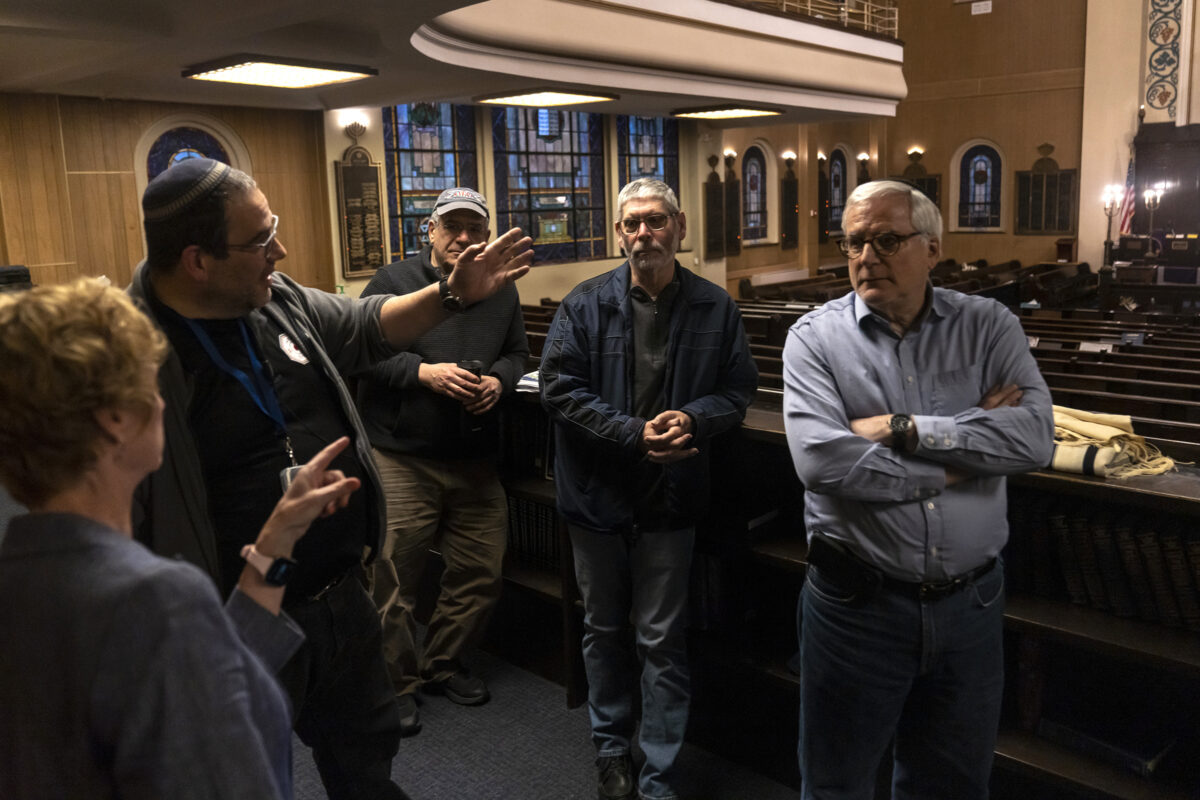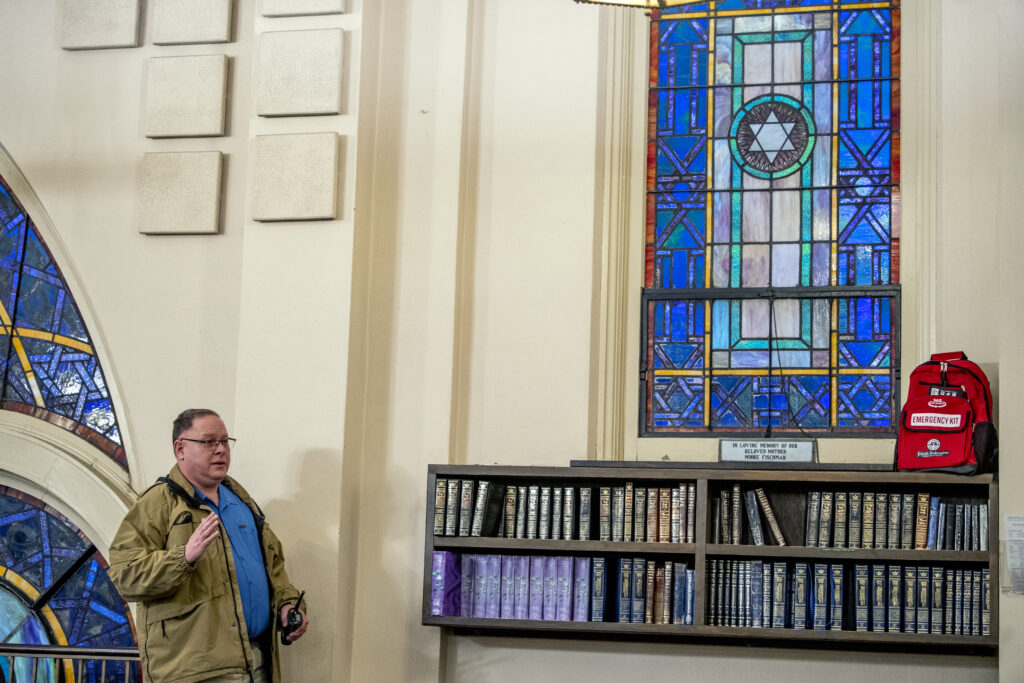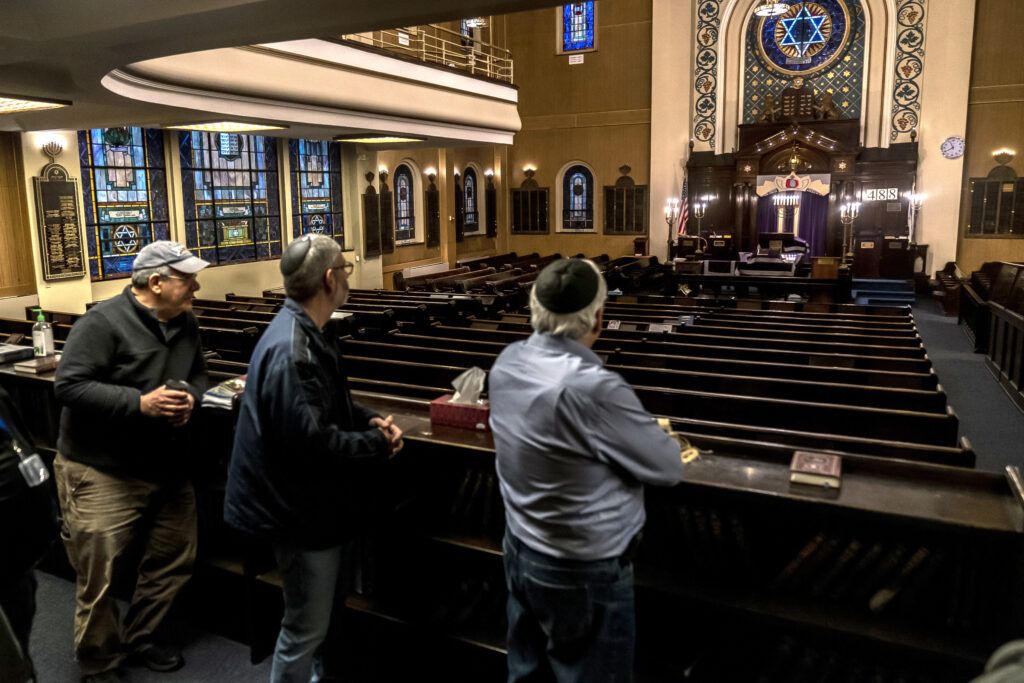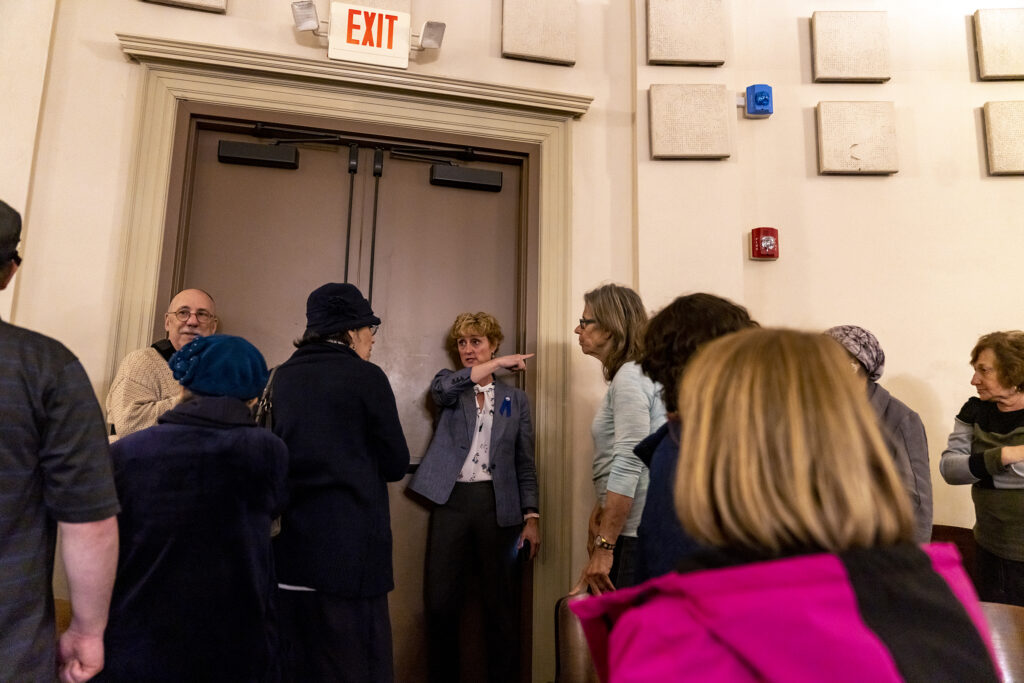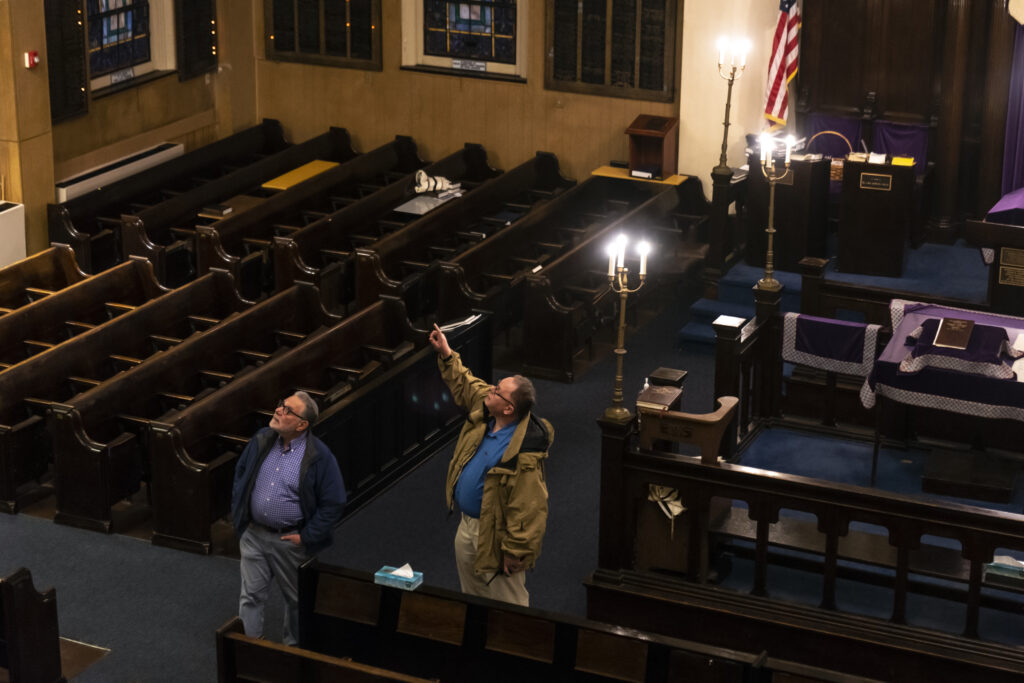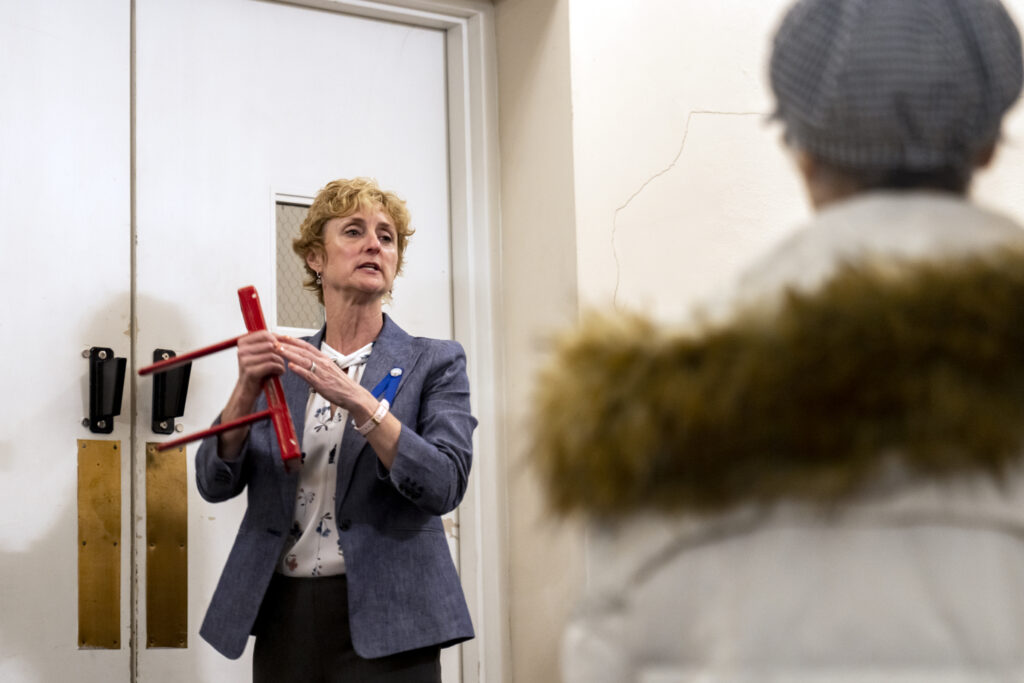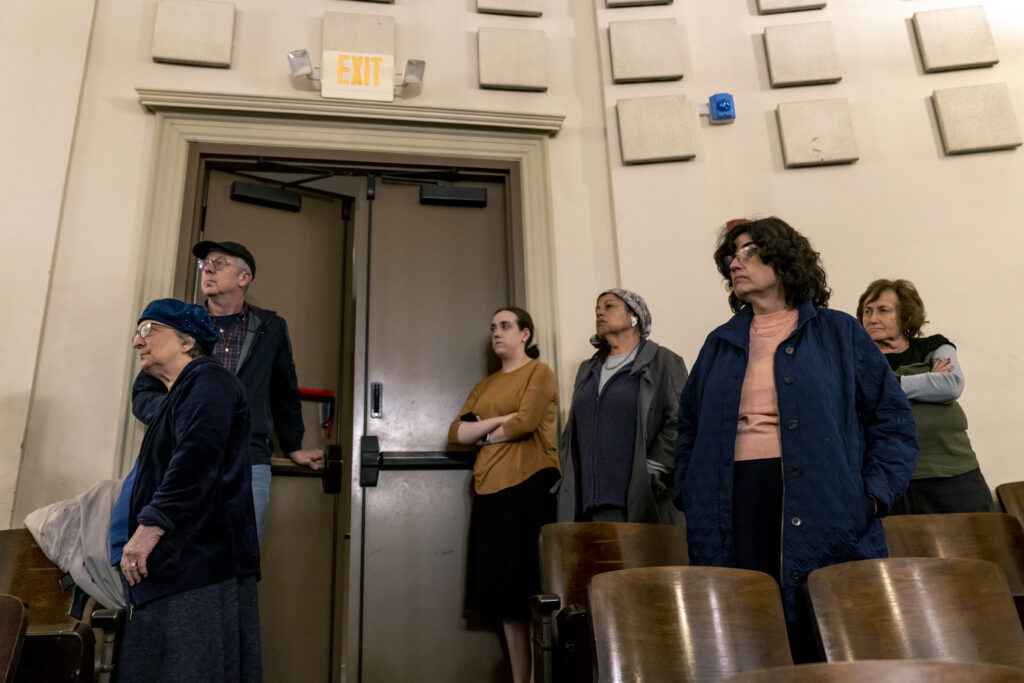During his bar mitzvah speech 52 years ago, Stephen Weiss taught members of Congregation Poale Zedeck about 74 biblical commandments. On April 30, Weiss returned to the Squirrel Hill synagogue to teach one more: survival.
As congregants lined the social hall for an evening dedicated to active threat training, Weiss recalled a similar exercise six years ago.
It was September 2017, and Weiss was teaching at the Tree of Life*Or L’Simcha religious school. The Jewish Federation of Greater Pittsburgh’s community security director at the time, Brad Orsini, insisted educators attend a session regarding active shooter preparedness.
“My first thought,” Weiss said, “was why do we need to worry about this? This is such a waste of time.”
Weiss reluctantly participated. He watched footage from a 2017 attack at the Fort Lauderdale-Hollywood International Airport. He saw people crouching behind empty luggage carts. And he listened to Orsini describe the futility of “hiding in plain sight.”
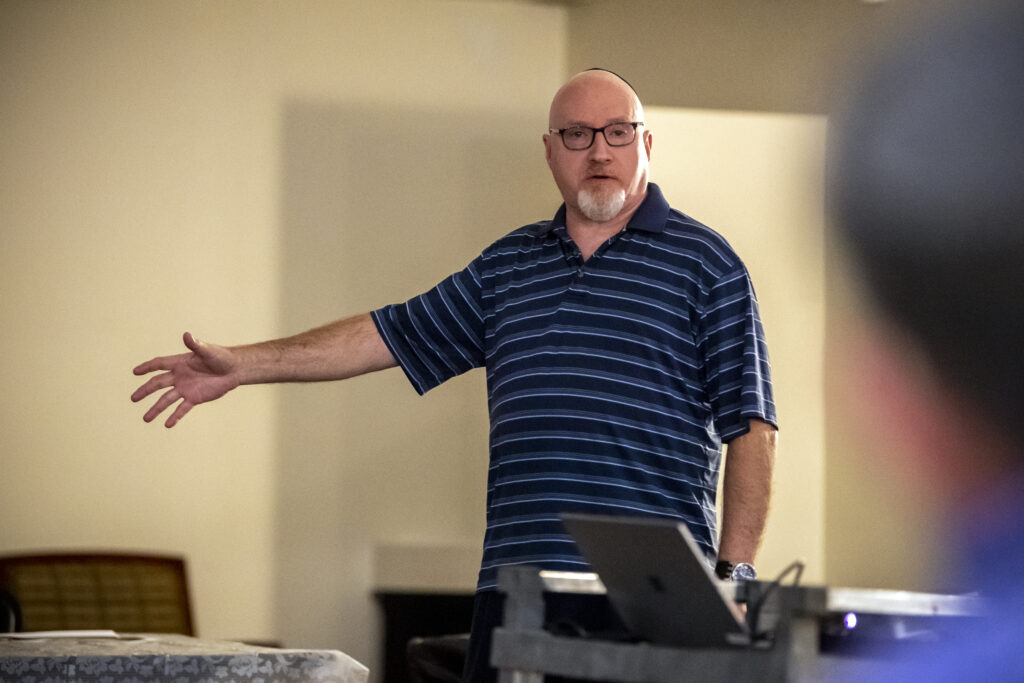
A year later, Weiss stood in the back of the Pervin Chapel inside Tree of Life’s synagogue during Shabbat services. It was Oct. 27, 2018.
“We were ready to say Kaddish d’Rabbanan,” he recalled. “There was a loud crashing noise down by the main entrance area.”
Weiss described the clamor as if “a tray of glasses” had fallen.
“I’m a person that has been shooting for, I don’t know, 40 years,” he said. “I recognize the sound of gunfire. I did not recognize that sound.”
Weiss stood at the doorway. Rabbi Jeffrey Myers finished reciting kaddish.
“There was a series of gunshots, four shots,” Weiss said. “And as I’m standing there, I’m watching shell cases bounce across the floor in front of me. The first thought I had was, this can’t be happening here.”
Weiss headed toward the chapel’s side windows. He said Myers told everyone to get down.
“As I started to get down next to that very back row, I remembered a video that Brad [Orsini] had shown us,” Weiss said. “I got back up, ran to the front area by the bimah — and on the bimah itself there were exit doors. I went up onto the bimah, up and out one of those exit doors.”
Weiss recalled other details. He mentioned the names of fellow worshippers, the roles they had, the positions he held at Tree of Life and a calendrical miracle: Although junior congregation was held at the synagogue three weeks every month, it wasn’t scheduled for Oct. 27.
“There were four of us that got out of that room unscathed,” Weiss said. “One was wounded. Everybody else was killed. The probability is, if I had got down to hide next to that bench, I probably would have been the 12th victim.”
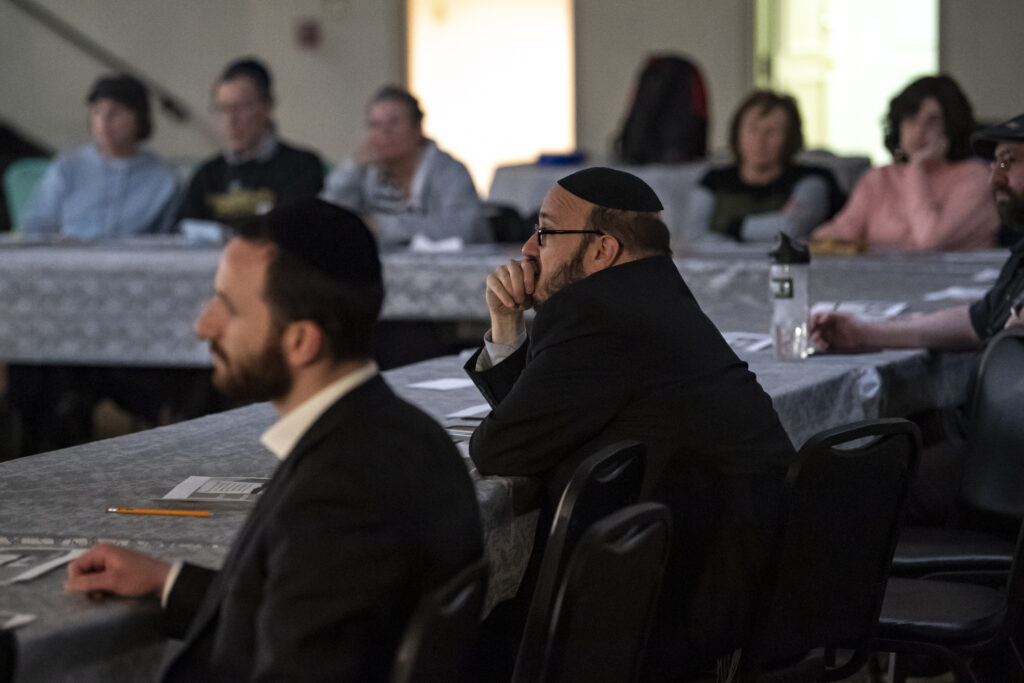
Seven members of Tree of Life, three members of New Light Congregation and one member of Congregation Dor Hadash were killed that day: Joyce Fienberg, Richard Gottfried, Rose Mallinger, Jerry Rabinowitz, Cecil Rosenthal, David Rosenthal, Bernice Simon, Sylvan Simon, Daniel Stein, Melvin Wax and Irving Younger.
The September 2017 active threat session Weiss attended made all the difference, he said. Without it, “I would have got down by that back pew.”
Four-and-a-half years after the Pittsburgh synagogue shooting, Orsini is the senior national security adviser at Secure Community Network. Shawn Brokos, a former FBI crisis management coordinator who oversaw the bureau’s Oct. 27 response efforts, directs community security for Pittsburgh’s Jewish Federation.
Brokos led the April 30 session at Poale Zedeck. She covered the basics of run, hide, fight — a “national model” the federation teaches to schools, organizations and congregations.
“Run means to evacuate away from danger if you can do so safely,” she said. “Hide means to secure in place, and find ways to protect yourself.” And though typically the “last resort,” fighting involves using “anything available,” she said. “Whether it’s a fire extinguisher or maybe a coffee cup, your goal is to attack that weapon and get the weapon away from the gunman.”
Reviewing the run, hide, fight protocol is “just one critical step in us keeping ourselves as protected as possible as a community,” Brokos said. “It’s up to all of us to go through this training. The more we do it, the more it becomes known to us, and we can respond much faster if there is a critical incident — because every second counts.”
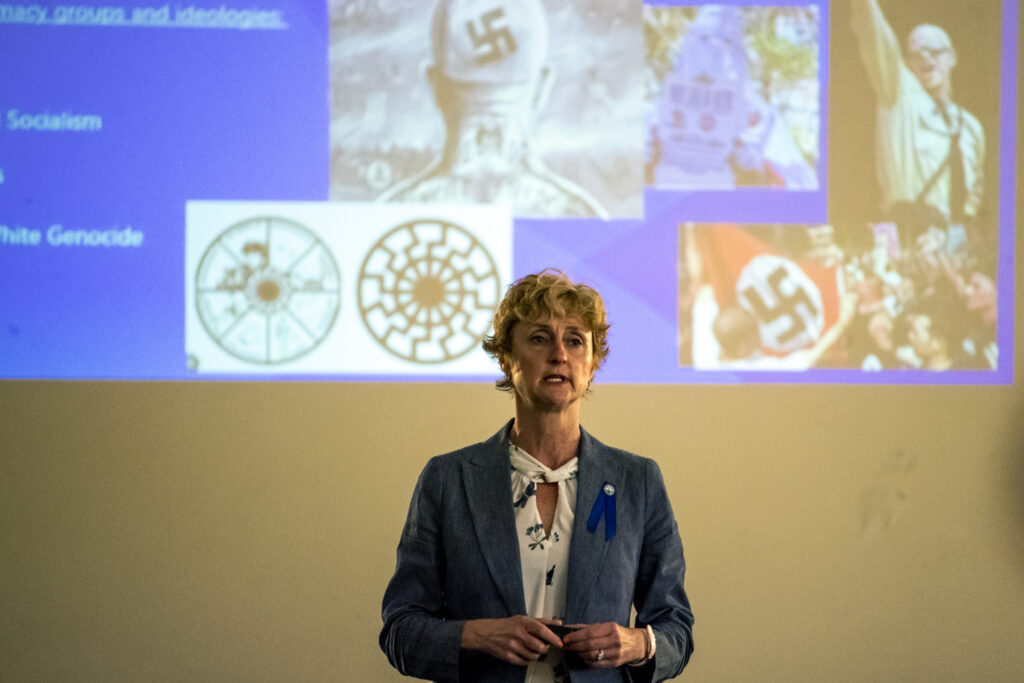
Police typically respond to active shooter threats in three minutes, according to the FBI. Law enforcement arrived at the Tree of Life building less than two minutes after receiving a call, Brokos said.
Weiss credited Myers with reporting the emergency and saving lives.
“My cellphone was locked in my car, and my keys were in the office of the synagogue,” Weiss said. “I had no access. The rabbi was the first person on the phone calling 911 because he had his phone. So although it’s not traditional to carry a phone on Shabbat, at least he had one accessible.”
Poale Zedeck is an Orthodox congregation. In deference to halacha (Jewish law), staff, leaders and most members refrain from using electronics, including cellphones, on Shabbat.
When asked about negotiating the tension between encouraging people to carry cellphones on Saturdays and observing Shabbat, Brokos said, “There’s no perfect answer.”
She teaches “life saving,” she said, but also strives to “be very respectful of the religious tenets that go along with it.”
Installing BluePoint alerts has helped, the former FBI agent explained.
Designed to look like fire alarms, the alerts instantly notify emergency responders about an active threat. Along with pinpointing where the alert was pulled, the system causes bright blue bulbs to blink.
“So if you’re walking up for services and you see these, do not go into the building,” Brokos said.
To teach attendees how the system functions, Brokos asked participants to occupy various stations throughout the synagogue. As they did so, doors slammed shut. Red security bars prevented entrance or exit. Blue strobe lights flashed.
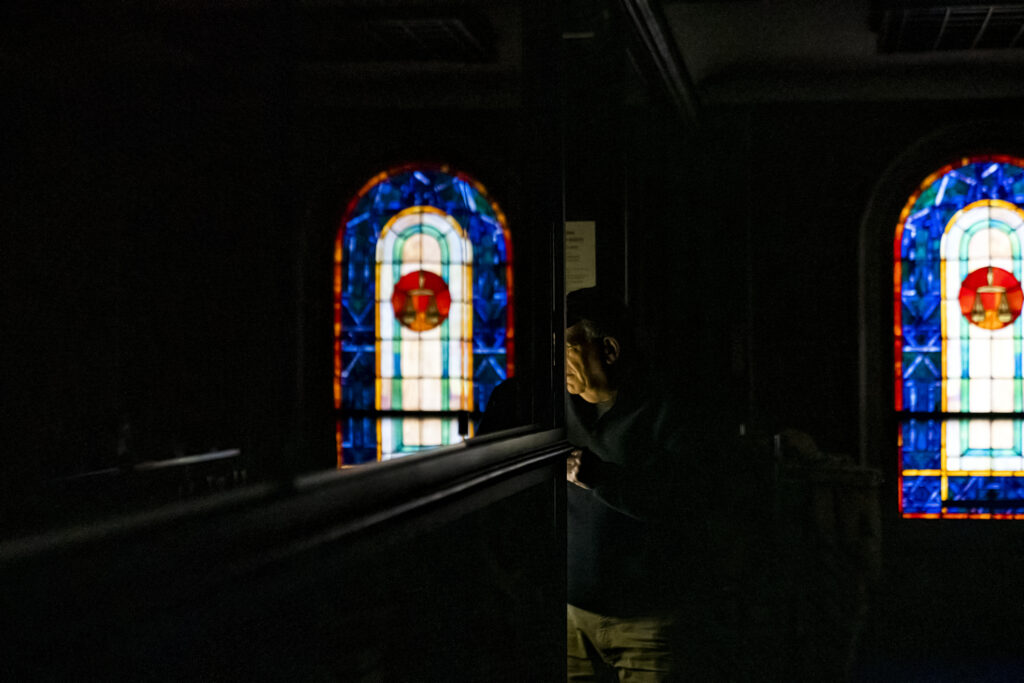
Joel Ungar, a longtime congregant who spends most Saturday mornings volunteering with Poale Zedeck’s security committee, stood in the back of the main sanctuary. After listening to instructions through an earpiece, Ungar told attendees that a system error had mistakenly informed police that an active threat was occurring.
In the interim, dozens of community members and law enforcement officials received a message from BluePoint about a “weapons threat alert” at Poale Zedeck.
“Something failed along the way,” Brokos said. “It was through no fault of anybody at Poale Zedeck or the Jewish Federation.”
Several texts were sent to calm recipients. One message read “Poale Zedeck was a TEST!!!”
Another message apologized for “the major inconvenience and confusion” and explained that “further investigation” was underway.
Brokos said the exercise, though concerning, was valuable.
“It was a learning experience — not an experience any one of us wanted Sunday night before jury selection starts up again in the trial — but at least we know the system does work,” she said.
Eric Kroll, a law enforcement officer with 30 years of experience, stood beside Brokos and reiterated the importance of active threat training.
“This is a horrible subject to talk about, but it empowers them and empowers me,” he said. “It’s a way of healing.”
Like Brokos, Kroll was at the Tree of Life building on Oct. 27, 2018.
“It’s one thing to be part of an incident like that. It’s another to find a way to make a positive out of a horrible situation,” he said. “This is a positive response to it. Not everybody has to be afraid to come to services, or afraid if someone comes through the door because we’ve done everything we can to prepare.”
Kroll and Brokos both encouraged the community to attend training sessions.
“I look at it as a team,” Brokos said. “If you’ve got folks on the team who aren’t practicing, or who are just not showing up for practice, then that hurts all of us because … they’re not going to know what to do.”
There is a relationship between preparation and responsibility, Weiss said: “We have to rely on each other. One person being trained doesn’t do us much good.”
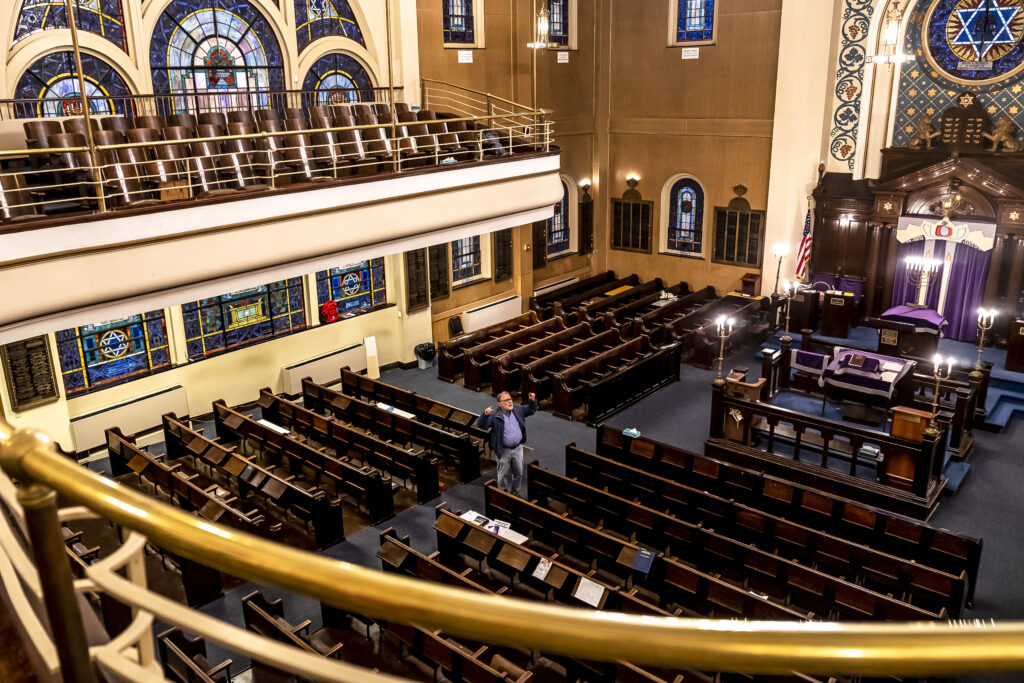
Fifty-two years before imploring members of Poale Zedeck to be prepared, he told those seated in the congregation’s pews about Parshat Ki Tetze.
That portion, Weiss said, has the most mitzvot of any in the Torah.
Among the 74 commandments recorded are instructions about removing stumbling blocks and obstacles from dwelling places, fulfilling utterances and building fences around roofs when erecting homes.
The final commandments in Ki Tetze, Weiss recalled, concern Amalek, a group who — according to Jewish tradition — attacked the oldest Israelites while traveling in the desert. In Hebrew, that passage is called “Zachor” (remember).
Adam Reinherz is a staff writer at the Pittsburgh Jewish Chronicle, where this story first appeared. It’s part of ongoing coverage of the Pittsburgh synagogue shooting trial by the Pittsburgh Jewish Chronicle and the Pittsburgh Union Progress in a collaboration supported by funding from the Pittsburgh Media Partnership.

Adam Reinherz
Adam writes for the Pittsburgh Jewish Chronicle and can be reached at areinherz@pittsburghjewishchronicle.org.

